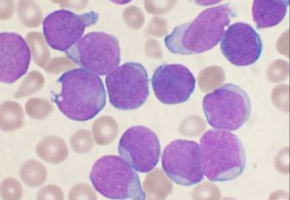
A combination of genetic mutations may explain the higher incidence of and poorer outcomes from paediatric leukaemia in Hispanic and Latino children, according to Penn State College of Medicine researchers.
They said a novel therapeutic drug combination - as well as testing for these mutations - may help address the disparity.
Hispanic and Latino children are between 1.2 and 1.75 times more likely to develop B-cell acute lymphoblastic leukaemia (B-ALL), the most common childhood cancer, than non-Hispanic and Latino children.
They also have a 40% higher death rate than their counterparts after correcting for socioeconomic factors.
Dr. Sinisa Dovat, a researcher and paediatric oncologist at Penn State Children's Hospital and Penn State Cancer Institute, partnered with Dr. Gordana Raca of Children's Hospital Los Angeles and Kimberly J. Payne of Loma Linda University to understand the biology behind this health disparity after prior research suggested that there may be an increased frequency of a type of genetic mutation in Hispanic and Latino children with B-ALL.
The researchers studied 239 paediatric patients with B-ALL at Children's Hospital Los Angeles and found two types of genetic mutations - a deletion of the IKZF1 gene (IKZF1) which holds instructions for cells to make the IKAROS protein and a rearrangement, or translocation, of the gene with instructions for producing the CRLF2 protein - occurred more frequently in Hispanic and Latino children.
IKZF1 deletion occurred two times more frequently in those children - making it the most frequent genetic alteration that signals poor prognosis of B-ALL.
There was a four-fold increased incidence of CRLF2 translocations in Hispanic and Latino children, as compared to non-Hispanic and Latino children.
"These mutations offer an explanation for the poor prognosis and increased incidence of B-ALL in Hispanic and Latino children and offer us insight into this paediatric cancer health disparity," Dovat said.
The researchers found that 11% of Hispanic and Latino children had both mutations compared to 0% of their counterparts.
Almost all of the Hispanic and Latino children with B-ALL who had a specific type of CRLF2 translocation also had an IKZF1 deletion, while a large number of them had an IKZF1 deletion without that specific type of CRLF2 translocation.
According to Dovat, these results suggest that IKZF1 deletion precedes or predisposes the CRLF2 gene to mutation. The findings were published today, Feb. 2, in Leukaemia.
Dovat said that further research is needed to understand the biological mechanisms for why these gene mutations happen more frequently in Hispanic and Latino children.
"Sequencing these genes in Hispanic and Latino children with B-ALL is essential to help paediatric oncologists determine a prognosis for these patients and develop appropriate treatment plans," Dovat said.
"Treatments that can restore the function of the IKAROS protein could be an efficient treatment for leukaemia."
In a companion study, also published today in Leukaemia, Dovat and colleagues outlined a treatment strategy that may be beneficial to patients suffering from this health disparity.
It involves targeting a protein, mTOR, that when over produced, can lead to resistance to chemotherapy and poor prognosis.
"The CRLF2 mutation, often found in Hispanic and Latino children with B-ALL, leads to increased activity of mTOR, which has been associated with poor outcomes," Dovat said.
"We proposed that an effective treatment regimen would hinder the activity of the mTOR protein, but also target the gene that carries the instructions for making mTOR by restoring the function of the IKAROS protein."
The researchers developed a combination therapy, starting with a drug that restores the function of IKAROS by inhibiting another protein called casein kinase 2 (CK2). When CK2 is prevented from carrying out its function, the IKAROS protein can keep mTOR from being produced.
The team also used a second drug called rapamycin to inactivate mTOR proteins already present in cancer cells.
Dovat and his colleagues evaluated this approach in the lab by using the combination, and each drug individually, on cancer cells from Hispanic and Latino patients.
They also later tested the approach against each drug individually and in combination in an animal model of leukaemia using cancer cells from Hispanic and Latino paediatric B-ALL patients.
They found that in both instances, the combination of two drugs proved more effective against leukaemia than either drug individually.
These studies laid the groundwork for a Phase I clinical trial with this treatment and provided a new paradigm for similar approaches to treat cancer using dual targeted treatments.
"We've identified a new approach for treating high-risk B-cell acute lymphoblastic leukaemia," Dovat said. "Our work established the foundation for clinical testing of a new combination therapy that may address health disparities and benefit patients who suffer from paediatric leukaemia."
Source: PENN STATE